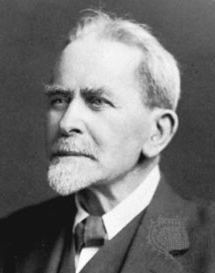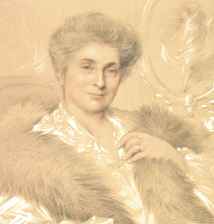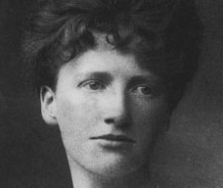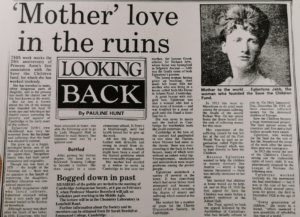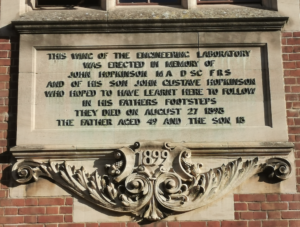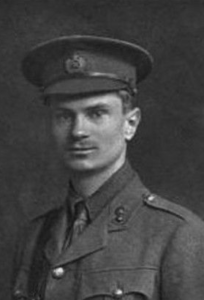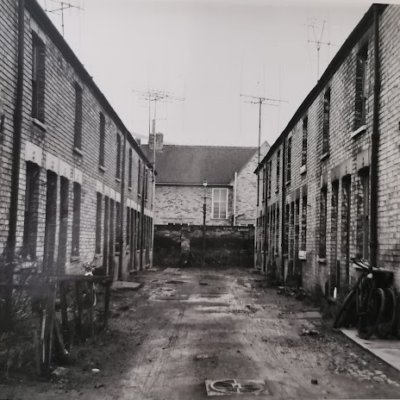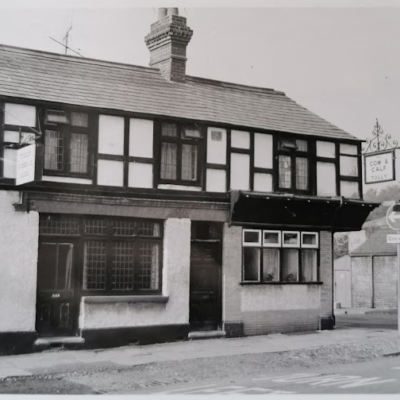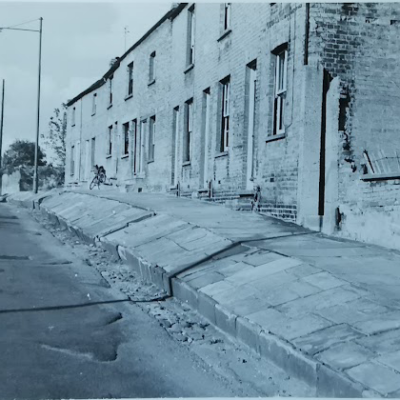Search by topic
- archaeology
- Building of Local Interest
- charity
- church
- crime
- dressmaker
- fire
- Great Eastern Railway
- Listed building
- Mapping Relief
- medieval
- oral history
- poverty
- Public House
- Rattee & Kett
- Religious House
- Roman
- scholar
- school
- Then and Now
- tudor
- women
- work
- world war one
- world war two
Search by text
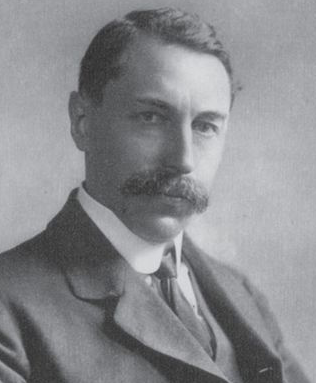 Bertram Hopkinson
Bertram HopkinsonLaharde, (Inch-Ha-Home), Ellerslie, 9 Adams Road
History of Laharde, Adams Road
1901
James George Frazer, 47, literature barrister at law not practising, b Scotland [author of The Golden Bough]
Lilly, 39, b France [author of Leaves from the Golden Bough]
Frances M Moore, 24, housemaid, b Newnham
Mary Ann Wallis, b Kingston
For more about the Frazers see Mary Green’s autobiography, The Joy of Remembering.
In 1939 the Frazers were living at 22 Little St Mary’s Lane.
1910-11
Eglantyne’s uncle was Richard Jebb, professor of Greek
See also:
Why are women continually written out of Cambridge’s history?
1902
The widowed Evelyn Hopkinson moved from London to Cambridge. She bought no.9 Adams Road as it was next door to her son, Bertram at no. 10.
She called it Ellerslie after her university college in Manchester.
In 1907 the Hopkinson family, Bertram, Marianna, née Siemans, and Alice, b 1905, moved from 5 Harvey Road to the newly built 10 Adams Road.
Bertram’s father, John Hopkinson and three of his children, Jack 18, Lina 19, and Alice 23, had died in a skiing accident at Arolla in Switzerland in August 1898.
1913
Mrs John Hopkinson
Bertram Hopkinson, professor of Mechanism and Applied Mechanics
Bertram and Marianna had 7 daughters; Alice was the eldest.
1917
Rudolph Cecil Hopkinson, a lieutenant in the Royal Engineers, was severely wounded near Loos in 1915 from shrapnel. He had been sent to France in charge of maintaining telephone cables. He died aged 25 on 9th February 1917 at home in Cambridge and was buried at the Ascension Parish Burial Ground.
During his last months, although in pain, he was able to receive visitors and was often visited by his young nieces, Alice and Fanny. Alice was deeply affected by the death of someone she looked upon almost as a brother.
1918
On 26 .8.1918 Bertram Hopkinson was killed when the Bristol Fighter he was piloting crashed in bad weather between Martlesham Heath and London. He was 45 and professor of Mechanical Engineering at Cambridge. In 1915 he had been transferred to the Royal Flying Corps with the rank of colonel to research weapons and resistance of military aircraft. The funeral took place in Cambridge 30.8.1918. Many prominent residents of Cambridge attended including Neville Keynes and Lady Darwin, daughter in law of Charles Darwin and close friend of Evelyn Hopkinson.
1922
Evelyn took her granddaughter Alice to South Africa in 1922. While away, she arranged for the construction of the Oak Room at 9 Adams Road. The room was equipped with two grand pianos and lots of sofas and armchairs.
Alice was now a medical student at Newnham College.
1925
Alice married Jack Roughton and moved to 35 Millington Road.
1933
Evelyn died. She left the house to her daughter Nelly but she lived with her husband Sir James Alfred Ewing and preferred to sell the house. It was bought by Alice’s father in law who had just retired and wanted to share a house with his son Jack and beloved daughter in law. So Alice, Jack and their two children, Geoffrey and Rosemary moved from Millington Road to no.9. jack’s father died soon afterwards and Jack inherited the house, remaining the owner until his own death in 1972.
Evelyn’s servants remained at the house until WWII. One of these was Florence Kinsey who arrived on her 14th birthday in 1914 and was the parlourmaid until 1937 when she married and was replaced by an Austrian cook.
In the 1930s there was a gardener, Sid. The nanny was Katie Harmans. She was German and as a result of the war returned there. She returned to Cambridge in 1987 and told Alice that because her English was so good, she had been recruited into Hitler’s private secretary’s office where she translated BBC news broadcasts.
1962
Alice L Roughton, physician and psychiatrist [daughter of Bertram Hopkinson]
Professor Fraser Roughton
The story of 9 Adams Road is told in detail in the book, ‘The House of Alice Roughton – Cambridge Doctor, Humanist, Patron and Activist – from the Edwardian to the Contemporary’ by Xavier Muñoz Puiggròs, Eng. trans. 2020′
Contribute
Do you have any information about the people or places in this article? If so, then please let us know using the Contact page or by emailing capturingcambridge@
License
This work is licensed under CC BY-NC-SA 4.0





